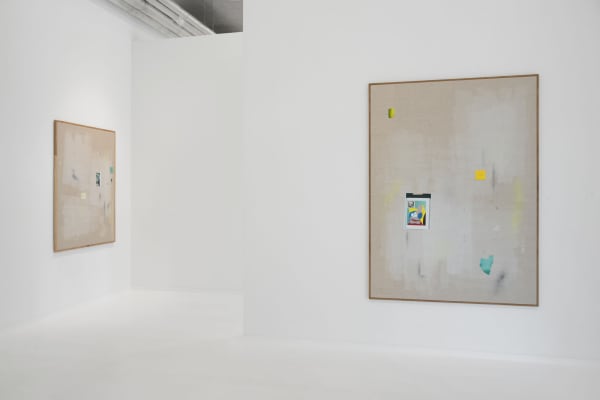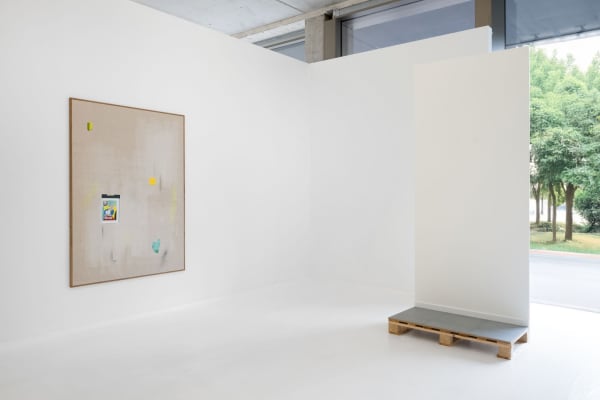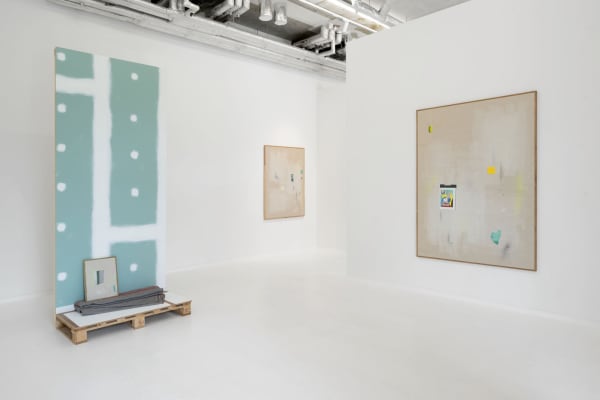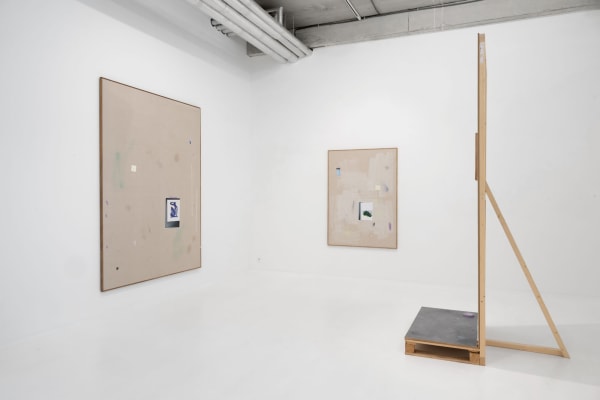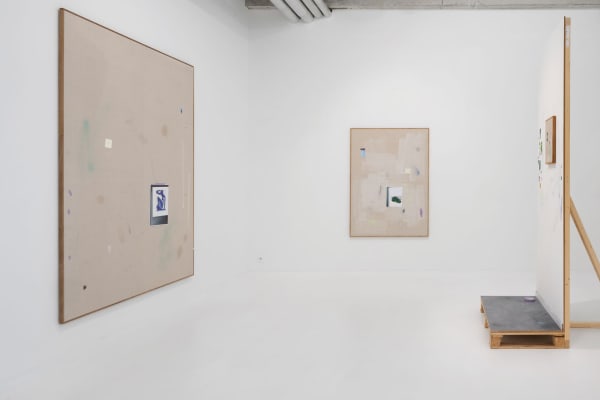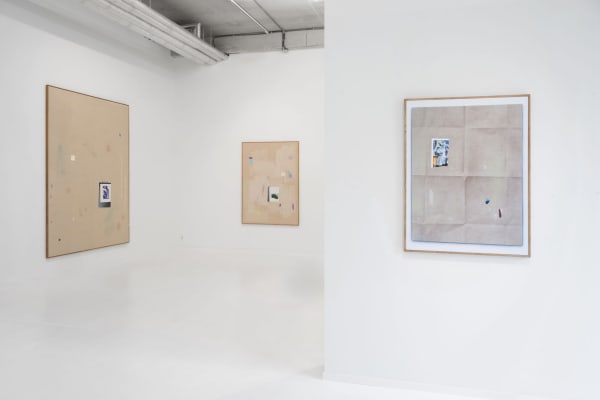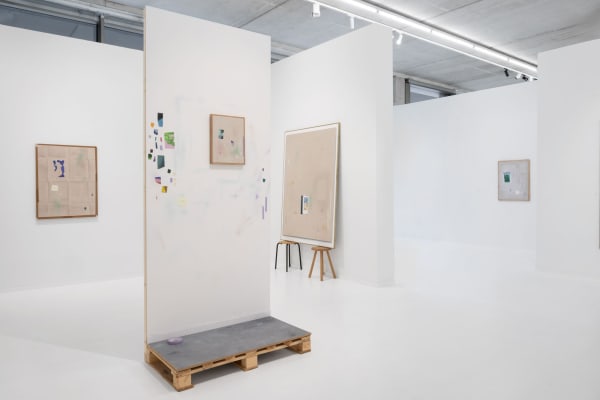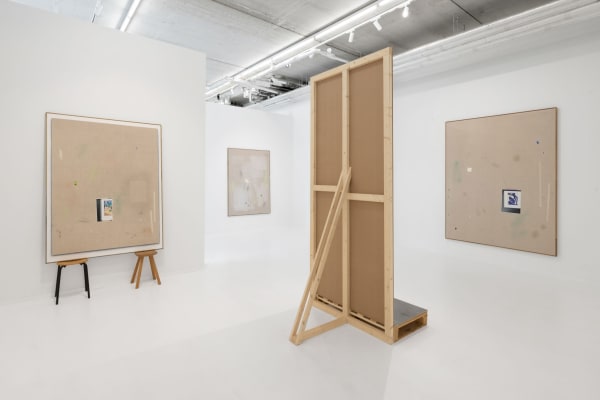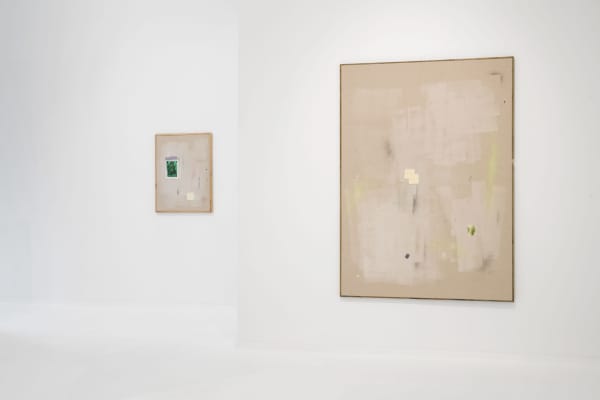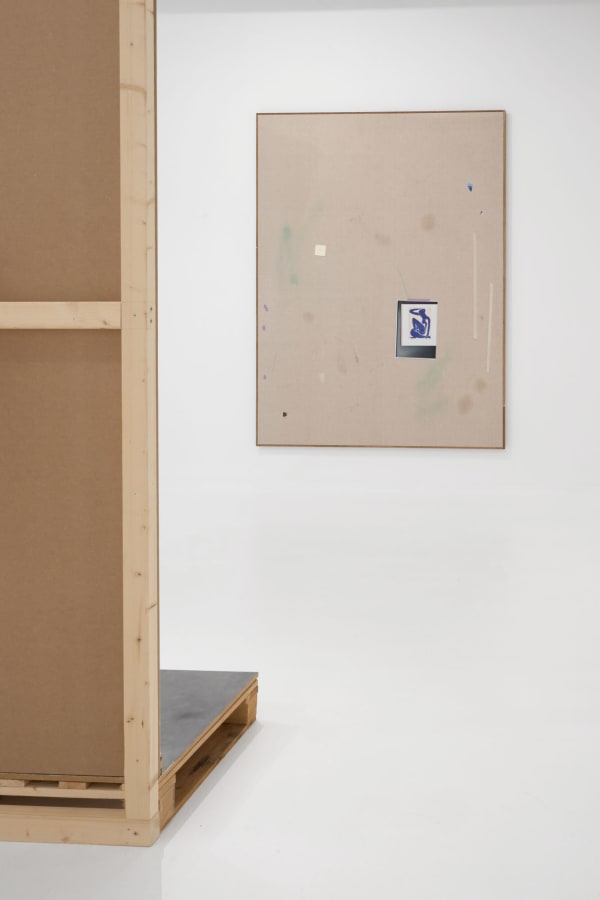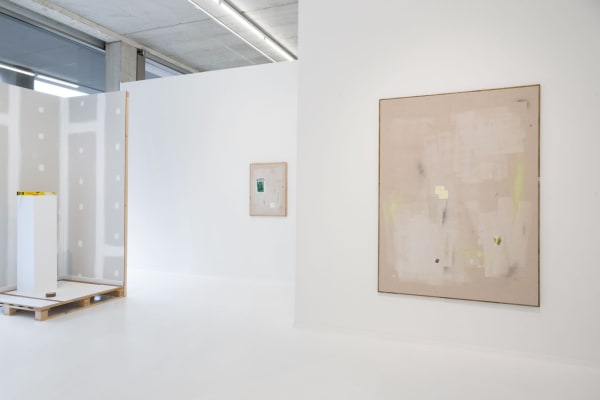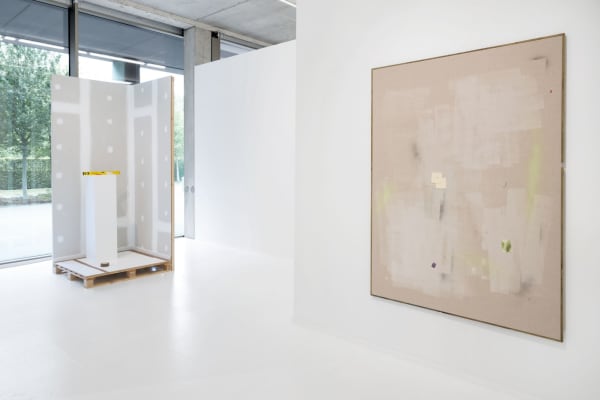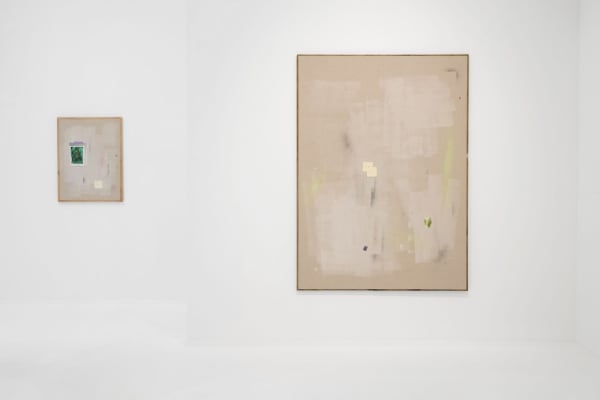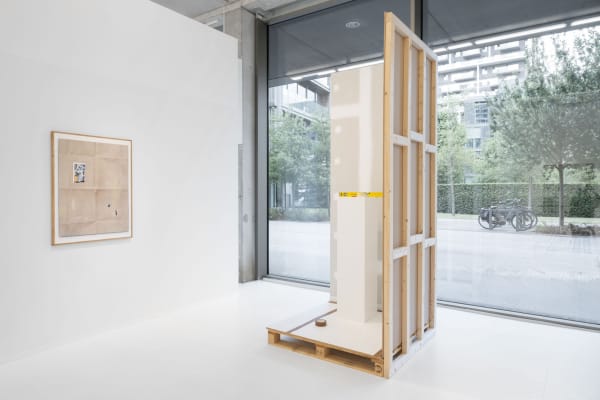Ritsart Gobyn: Ça suffit?
Past exhibition
Overview
Is it enough? A question that, much like the work of Ritsart Gobyn (°1985), seems to teeter between construction and deconstruction — initiating or omitting, revealing, or concealing, showing, or hiding? — and sticks just as stubbornly as the tape and post-its on his canvases. “Is this art or can we toss it?”
The work appears to be under construction: not as a flaw, but as a strategy. Gobyn reveals the traces of becoming. As if the canvas constructs itself before your eyes, breaks down, resumes. The studio sneaks into the exhibition space; each painting a building site in suspension. Technical mastery is deployed to perfectly render imperfection — doubt, motion, attempts. It is a controlled choreography of deceptive chance and repetition. Every gesture is rehearsed, every effect meticulously constructed. Virtuosity serves a hyperprecise scenario of imperfection: what appears to be a stain is a calculated mark; what looks like dirt is carefully preserved residue. Gobyn exorcises the act of making by exposing the process — without ever fully revealing his hand. The canvas itself is the craftiest participant in the game of unveiling: both support and illusion. It seems to serve but leads the dance.
First, Gobyn captures real traces from the studio floor, which he then straightens, disrupts, reworks. Every mark is both evidence and suspicion. What is real, what is simulation, what is copy? That question is not the end, but the beginning. In this exhibition, the 20th century has quietly crept in. Gobyn now lets the modern masters join in — not as nostalgic citation, but as lingering ghosts of modernist doubt. They enter the work through the backdoor: no grand gestures, but fragments from art books. He encounters Picasso or Matisse not as originals, but as reproductions — with visible edges and faded colours — perfect copies of copies. Because Gobyn works with highly coded, iconic images, the viewer can effortlessly fill in the missing parts. This happens almost automatically: recognition that invites complicity. “Do you know who this is?” The images function as visual triggers, deeply rooted in the collective memory through their repetition in art history, marketing, and popular culture. In this way, Gobyn raises questions not only about image consumption, but also about originality: we think we’re seeing a Picasso, but it’s an illusion. Classic became print, became cliché — only to become valuable again through Gobyn’s artisanal painting process. He deliberately places the ‘high’ and ‘low’ side by side, without hierarchy: a strip of tape becomes a masterpiece, and a masterpiece becomes just another fragment. What begins as a seeming homage to painting becomes a critical reflection on reproduction and construction, where past and promise exist in constant tension.
Gobyn keeps the viewer on their toes. He presents his works spatially: not just on the wall, but on the floor or as installations that pull the painting into space. His paintings behave like sculptures, or vice versa: images disguised as objects. He challenges our expectations and invites the audience to find their position between appearance and reality. “Are you even real?” each work seems to whisper. Gobyn breaks the fourth wall, as Bertolt Brecht did in theatre, turning the viewer into a participant. The deception is playful and yet profound — a form of trickery that doesn’t want to be exposed but admired. The audience knows it’s an illusion, and still believes in it: precisely that tension makes the work irresistible. His art is experienced where confusion, humour and awe collide. We love to be deceived.
The trompe-l’œil he so cherishes, he inhabits fully — aware of every pitfall of spectacle or overacting. He challenges the perception of both eye and mind. We do not see with the eyes but with the brain. Gobyn moves between image and mental structure, akin to artists like On Kawara, who captures time structures, and Christian Boltanski with his structures of memory. He doesn’t merely show material structures; it is storytelling as mental scaffolding — a construction of meaning. How do we see the world? Which stories do we accept as truth? It becomes visible that every ‘reality’ is constructed — a story, a framework, an interpretation. In times of decay, uncertainty, or alienation, construction is an attempt at finding hold. Fragments and references build characters and identities that transform into direct questions. ‘OK’ — Georgia O’Keeffe’s signature — becomes an echo of the ongoing doubt inherent to the creative process: ‘OK?’. At the same time, he exposes the invisible structures of power, identity, and history: who decides what is visible, how are systems and roles formed? Construction, in Gobyn’s work, is ambiguous — it is a physical build-up of paint and support, but also a philosophical model: an ordering that seeks grip on the fragile border between seeing and understanding, a way to grasp the fleeting and complex nature of our reality. In the end, everything around us is held together by stories, perspectives, and symbolic frameworks. Exhibition and artwork are always constructions — normally hidden. Gobyn lays them bare — a paradox where deception becomes revelation. What appears to be trickery reveals meaning.
Art as a constructive act. Gobyn builds alternatives: for seeing, for thinking, for feeling. The act of making art is one of building and undermining: showing how existing structures are unstable. The works offer order, and simultaneously reveals the beauty of the crack. They make visible how both the world and our understanding of it are constructed — and how we can (re)think anew. What is built, can collapse. Balance is not symmetry. Not stillness. It is tension, held just long enough to become grace. The works confront us with our need for structure — and the illusion of it. Perception is always limited to what is built, constructed, made visible. What gives support — physical or mental — is temporary, fragile, and changeable. In these silent decors, light is frozen, and dust irrevocable. Time is halted and immortalised. His canvases and installations function as cut-out scenes from the ongoing process of decay — contemporary Vanitas that make inevitability tangible.
Form and structure are not neutral carriers, but active, expressive forces — just as eloquent as content. With Gobyn, structure becomes subject. “We must learn to see more, to hear more, to feel more,” writes American activist and author Susan Sontag. Gobyn questions the constructions through which we give meaning — to art, to time, to ourselves. Structure is not the denial of chaos, but a form of manageable vulnerability. Gobyn does not tell us what to think — he lets us feel what thinking feels like. “Art is seduction, not rape.” Femke Vandenbosch
Installation Views

